Number in English GrammarHaving a solid understanding of English grammar is crucial to achieving fluency in the language. Without knowledge of the rules and conventions of English grammar, it is difficult to effectively communicate in the language. Grammar is the spine of the English language, which provides meaning, structures, and directions to sentences. If you are feeling overwhelmed by the usage of numbers in English grammar, it's important to remember that numbers are simply a grammatical category. When we discuss the use of numbers in English, we are referring to two categories: singular and plural. 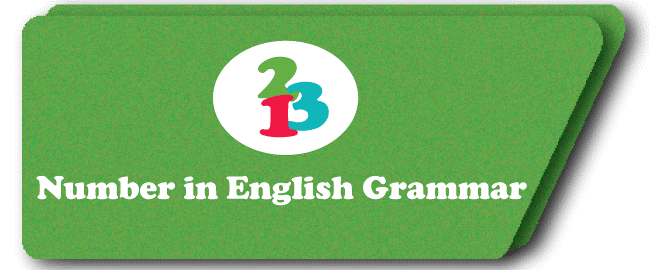
These categories apply to various elements of grammar, encompassing verbs, nouns, pronouns, and determiners. In other words, all aspects of grammar such as nouns, pronouns, verbs, or determiners can be described as either singular or plural. The use of numbers in grammar involves a contrast between singular and plural forms. To fully understand the meaning, kinds, and functionality of numbers in Grammar, it's essential to read and learn from reliable sources. By studying examples and rules, you can not only understand but also implement the use of number categories in your own sentences. Remember, once you have a clear understanding of a certain aspect of grammar, you can use it confidently and accurately. In summary, having a strong grasp of English grammar is fundamental to fluently speaking, reading, writing, and understanding the language. The use of numbers is an important aspect of grammar, and studying the rules and examples can help you become more confident in your use of singular and plural forms. So, don't hesitate to dive into learning more about the function of numbers in English grammar, as it can make a significant difference in your language abilities. 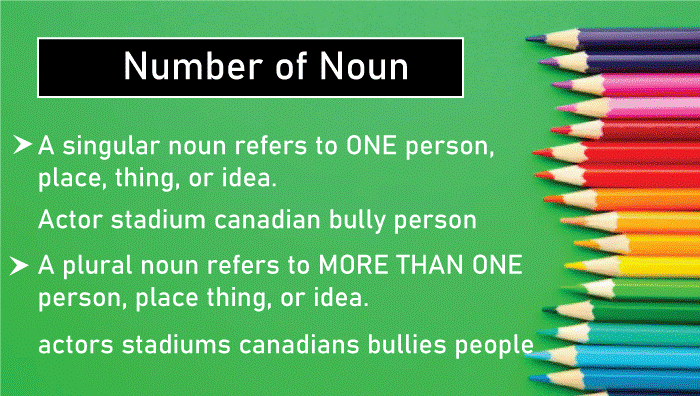
Numbers in English GrammarThe term "number" in English grammar describes the contrast between the singular and plural versions of a verb, a noun, a pronoun, and a determiner. Both singular and plural forms can be utilized to represent all states with the help of numbers. This article provides examples and rules that will help you gain a more appropriate understanding of the functions of numbers. It's crucial to note that numbers are used to indicate quantity in language. Without a good understanding of how to use numbers in your sentences, you may not be able to refer to quantity accurately. To speak, write, read, and listen in English with precision, it's essential to comprehend the different types and rules of numbers. To understand the functions of numbers better, you can refer to the examples provided in this article. It's also worth noting that zero is counted as a plural in English grammar, as in "zero cats". Understanding this rule is important to ensure that you use the correct form in your speaking and writing. Examples of Numbers in English GrammarThe number is a grammatical category that has two categories in English, namely singular and plural. These two pertain to various aspects of language including noun, pronoun, determiner, and verb. Singular implies to the quantity of one while plural implies more than one. To illustrate this, consider the following instances of nouns, pronouns, determiners, and verbs in the following categories:
For example, "That woman follows her" is a sentence with all single words, including a single determiner, noun, verb, and pronoun. In contrast, "They ate those drugs" is a statement with all plural words, including plural pronouns, verbs, determiners, and nouns. 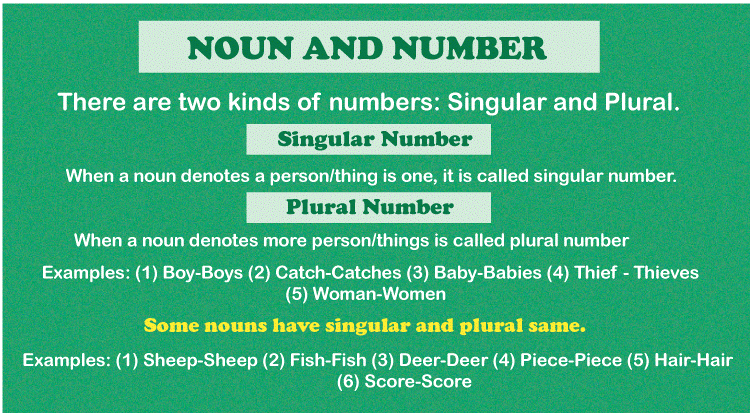
Types of Numbers In English GrammarGrammar utilizes two types of numbers: singular and plural. Singular denotes only one usage of a noun or pronoun, for example, "mother," "pencil," "cousin," and so on. On the other hand, plural implies the count of more than one for any grammar element such as noun or pronoun, for instance, "mothers," "desks," "pencils," and so on. The following examples are organized according to pronouns, nouns, and determiners to help you better understand each aspect. Rules of NumberBelow are the rules for using numbers in grammar, accompanied by examples. Familiarizing yourself with these rules and examples will help you use them effectively in your communication. Rule 1 states that adding an "s" at the end of a singular noun makes it plural. For example, "pen" becomes "pens", "cat" becomes "cats", "house" becomes "houses", "dog" becomes "dogs", and "mobile" becomes "mobiles" . Rule 2 applies when the singular noun concludes in "s", "sh", "ch", "x", or "z". In this case, "es" is added at the end to make it plural. Examples include "bus" becoming "buses", "dish" becoming "dishes", "branch" becoming "branches", "fox" becoming "foxes", and "fez" becoming "fezes" . Rule 3 applies when the singular noun ends in "ch". Even though "s" can be added at the end, "es" is preferred. Examples include "monarch" becoming "monarchs", "patriarch" becoming "patriarchs", "matriarch" becoming "matriarchs", "stomach" becoming "stomachs", and "hierarch" becoming "hierarchs" . Rule 4 applies when the singular noun finishes in "f" or "fe". In this case, the "f" or "fe" is replaced with "v" and "es" is added at the end. Examples include "thief" becoming "thieves", "wife" becoming "wives", "knife" becoming "knives", "wolf" becoming "wolves", and "leaf" becoming "leaves" . Part 1 of Rule 5 applies when the singular noun finishes in "y" with a consonant prior to it. In this case, the "y" is replaced with "i" and "es" is added at the end. Examples include "story" becoming "stories", "hobby" becoming "hobbies", "army" becoming "armies", "fly" becoming "flies", and "baby" becoming "babies" . Part 2 of Rule 5 applies when the singular noun finishes in "y" with a vowel prior to it. In this case, only "s" is added at the end. Examples include "donkey" becoming "donkeys", "toy" becoming "toys", "day" becoming "days", "joy" becoming "joys", and "play" becoming "plays" . Rule 6 applies when the singular noun finishes in "o" with a consonant prior to it. In this case, "es" is attached at the end. Examples include "hero" becoming "heroes", "mango" becoming "mangoes", "zero" becoming "zeroes", "potato" becoming "potatoes", and "echo" becoming "echoes" . However, there are exceptions to Rule 6. Some nouns, such as "photo", "piano", and "radio", only use "s" at the end. Other nouns, such as "mosquito", "commando", and "portico", can use both "s" and "es" at the end . It's important to keep these rules in mind when forming plural nouns, as using the wrong form can lead to confusion and misunderstandings . Some need "en", "ren", and "ne" to add at end. For example, "ox" becomes "oxen", "child" becomes "children", "brother" becomes "brethren" (although "brothers" is also correct), "cow" becomes "kine" (although "cows" is also correct), and "sister" becomes "sistren" (although "sisters" is also correct) . However, if "man" implies to a human being in a compound noun (a noun which comprises two or more terms that together make a single noun), "men" replaces "man", as in "salesman" becomes "salesmen", "Truman" becomes "trumen", "sailor man" becomes "sailor men", "man-of-war" becomes "men-of-war", and "saleswoman" becomes "saleswomen" . However when "man" is just portion of the word, or it implies to any ethnic group, race or civilian, "s" occurs, as in "Muslim" becomes "Muslims", "Brahman" becomes "Brahmans", "German" becomes "Germans", and "Norman" becomes "Normans". Rule 7: When there's a "ful" at the end, "s" is added, as in "handful" becomes "handfuls", "mouthful" becomes "mouthfuls", "spoonful" becomes "spoonfuls", "armful" becomes "armfuls", and "cupful" becomes "cupfuls" . When a compound noun comprises multiple words, the pluralizing "s" is added to the main part of the noun. For example, "mother-in-law" becomes "mothers-in-law," "passer-through" becomes "passers-through," "sister" becomes "sisters," "Attorney-at-law" becomes "attorneys-at-law," and "Hangout spot" becomes "Hangout - spots. " 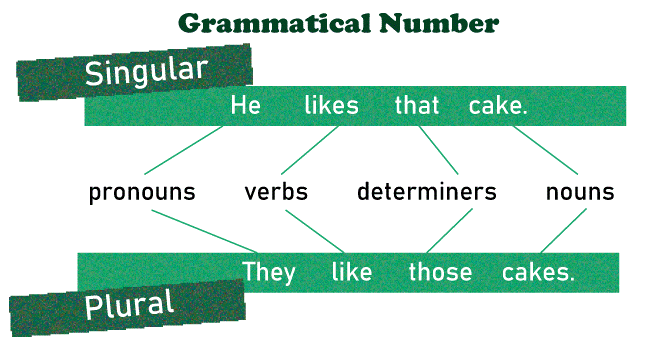
In some cases, "s" is attached to each portion of the compound noun to make it plural. For example, "attorney" becomes "attorneys," "maid" becomes "maids," and "Child- " becomes "children. Rule 8: Some nouns only need to add "s" to become plural, while others require a change in spelling to become plural. For example, "book-shelf" becomes "book-shelves" and "major-general" becomes "major-generals." However, not all compound nouns accompany this rule. Some, like "forget-me-not," remain the same in the plural form . Rule 9: Some nouns have no plural form and are only utilized in the singular form. These nouns include "furniture," "scenery," "issue," "bread," and "expenditure. " Rule 10: There are some nouns that are always used in the plural form, even if referring to a single object. Examples of such nouns include "mumps," "scissors," "trousers," "spectacles," and "assets. " Rule 11: Some nouns occur to be singular, but they are in actual plural. These include "government," "peasantry," "people," "cattle," and "mankind." They are usually treated as singular nouns in terms of verb agreement . Rule 12: Conversely, certain nouns appear to be plural, however they are in actual singular. Examples include "physics," "politics," "ethics," "news," and "wages." They are regarded as single nouns in terms of verb agreement . Rule 13 states that there are certain words that have the same form for both singular and plural, such as "deer," "sheep," "species," "corps," and "canon. " Rule 14 states that when it comes to letters, numbers, and symbols, adding an apostrophe and "s" is the way to indicate a change in number. For example, "Kylie, add two 3's and three 5's. " Rule 15 states that there is no set rule for changing the number of pronouns, and it is something that needs to be memorized. Singular pronouns include "I," "my," "me," "mine," "he/she," and "you," while plural pronouns include "we," "our," "ours," "us," "you," and "they. " There are also singular and plural forms for certain pronouns such as "him/her," "your," "this/that," "it," and "his/her," as well as "them," "your," "these/those," "their," and "they. " It is crucial to comprehend these rules to use them rightly and avoid making mistakes in sentences. Grammar is essential in conveying thoughts and ideas in English, and mastering its rules is crucial for learning the language effectively. 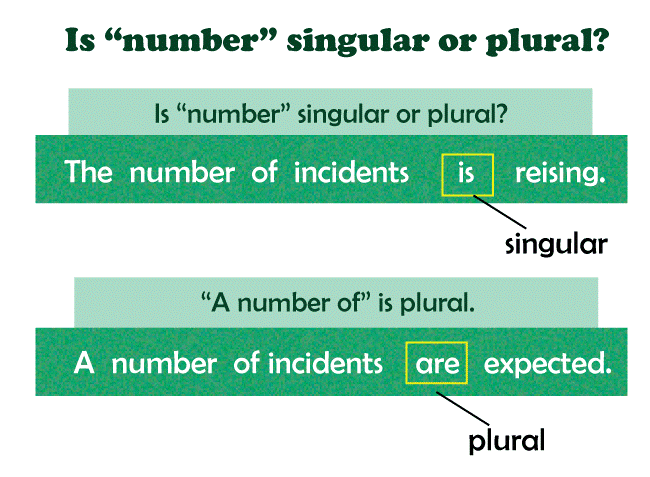
Why Numbers Are Important In English Grammar?Understanding grammatical number is important because it allows us to use language correctly and effectively. Grammatical number refers to whether a word is singular or plural, and this affects how other words in the sentence need to agree with it. For example, when a noun becomes plural, it may add an "s" at the end, and when a verb is used with a plural subject, it may lose the "s" at the end. However, when contrasted to numerous other languages, English is comparatively simple in this regard because many words (particularly adjectives) do not change when their grammar number changes. In English, for instance, we can say "stinky dog" and "stinky dogs," and the word "stinky" remains unchanged. In many other languages, such as French, German, and Spanish, adjectives and other words often change in form to match the number of the noun they're describing. While English is relatively easy in terms of grammatical number compared to other languages, it is still important to understand it because it can help with learning a foreign language. Although indigenous English speakers are fairly competent at guaranteeing that their determiners, pronouns, adjectives, and verbs coincide in number, there are certain common difficulties that might stump us up. English speakers are skilled at making sure their words match in number. This means that nouns, pronouns, adjectives, and verbs are all in agreement with each other. To be more specific, English speakers are good at making sure: Determiners Agree in Number With NounsWhen we talk about things in English, we usually make sure that the words we use to describe them match in number. For example, we say "this story" (singular determiner with singular noun) and "these prizes" (plural determiner with plural noun) because the word "this" goes with a singular noun, and "these" goes with a plural noun. Determiners Also Need to Match Pronouns In Terms Of Singular And Plural.For example: I write my own morals except for this one. I took this one from someone really intelligent. (singular determiner along a singular pronoun ) I wish to be one of those individuals who become legends. (plural determiner along a plural pronoun ) To make a sentence sound right, we require to match the number of a noun with its verb. For example, we say "A fly flies" because "fly" is singular and we use the singular form of the verb "flies" . We also need to match the number of a pronoun with its verb. We say "Everything is self-evident" because "everything" is singular and we use the singular form of the verb "is". We say "Some are wise and some are otherwise" because "some" is plural and we use the plural form of the verb "are". Although we're usually good at getting grammatical number right, we sometimes make mistakes. There are common issues that often confuse us. 1. One of these issues is to ensure that "these" and "those" agree with the plural noun they are describing . It's important to pay extra attention when using these words with "kind" and "type." These kind of items. Incorrect (It must be "kinds." ) Those type of problems. Incorrect (It must be types ) (Issue 2) Do not make the incorrect noun agree with the verb . When using sentences like "a container of sweets" or "a box of chocos," make sure the verb agrees with the head noun (i.e., "container" or "box") and not with the noun that comes after "of" (i.e., "videos" or "chocolates"). Some of these issues include making sure that determiners like "these" and "those" accord with their noun, ensuring that the verb accords with the head noun in constructions like "a container of sweets or a box of chocos," and being aware that terms like "along with" and "together with" do not increase the number of the subject. It is important to be aware of these issues so that we can communicate effectively and avoid making mistakes in our writing and speaking. An assortment of desserts are available from the store. incorrect ( The verb must agree with the singular "box." ) (Issue 3) Keep in mind that words like "together with" and "along with" do not add to the number . Phrases like "together with," "along with," and "as well as," unlike "and," do not raise the quantity of the subject. Billy and Benjamin are the Bud vase Men . (The word "and" adds to the number. ) Billy, together with Benjamin, is a Bud vase Man. Correct (The phrase "together with" does not raise the number. ) (Issue 4) Keep in mind that "or" and "nor" do not add to the number . "Or" and "nor" do not raise the number (unlike "and"). Bill or Ben is the one who broke the daisy. Correct Neither Billy nor Benjamin has anything about farming. Correct (Issue 5) Consider "either" and "neither" to be singular . Despite the fact that they appear to refer to two different things, "either" and "neither" are singular. Chicken nuggets or Corn? Neither is my preferred option. Correct Either of the twin girls is present. Correct (Issue 6) Please keep in mind that collective nouns might be singular or plural . A collective noun is a term that refers to a group of people (e.g., "choir," "flock," "herd"). Based on the context, a collective noun might be single or plural. The flock is dispersing. Correct (A collective noun is single when viewed as a whole.) The flock are dispersing in all directions. Correct (A collective noun is plural when the emphasis is on the members of the group. (Issue 7) Keep in mind that the word "none" might be singular or plural . Despite the fact that some your readers may expect you to use the single version, "none" can be either singular or plural. None of us are comfortable. Correct None of us is content. proper Correct If your "none" is best translated as "not one of," use the singular form. If it best reads as "not any of," use the plural form. (Issue 8) Be aware that words such as "like half of," "the bulk of," and "a proportion of" can be used in either singular or plural form . Phrases like "half of," "a portion of," "a percentage of," "a ratio of," and "a majority of" are singular when referring to a singular item but plural whenever referring to a plural entity. Half of my life has been dedicated to burying the other half. Correct ("Half" is singular since it alludes to the singular "life." ) Half of the citizens have never flipped through a newspaper, and the other half have never polled. One can only hope it's the same part. Correct ("Half" is plural since it implies to "citizens," which is plural.) (Issue 9) Consider "a number of" to be plural, however "the number of" to be single . The phrase "a number of" is plural, however the phrase "the number of" is singular. A number of individuals are still sleeping on the streets of the town. Correct The number of individuals sleeping on the streets is increasing. Correct (Issue 10) Make a note that phrases like "all of" and "some of" might be singular or plural . When they come before anything singular, "all of," "any of," "more of," "most of," and "some of" are single; whenever they come before something multiple, they are plural. Most of the article does not make logical sense. Correct ("Most" is singular since it comes before the single "article.") Most of the people are unaware, yet we are all part of something far larger than ourselves, and we are all linked in some way other than Social Media. Correct ("Most" is plural because it comes before "people," which is also plural.) (Issue 11) Consider "each of" to be singular . "Each" is a singular noun. When it occurs in a phrase like "each of us" or "each of the kids," it is not plural. Each of my clothing is distinctive in its own way. Correct Each of us faces his own karmas. Correct Important Points
Next TopicDegree in English Grammar
|
 For Videos Join Our Youtube Channel: Join Now
For Videos Join Our Youtube Channel: Join Now
Feedback
- Send your Feedback to [email protected]
Help Others, Please Share









